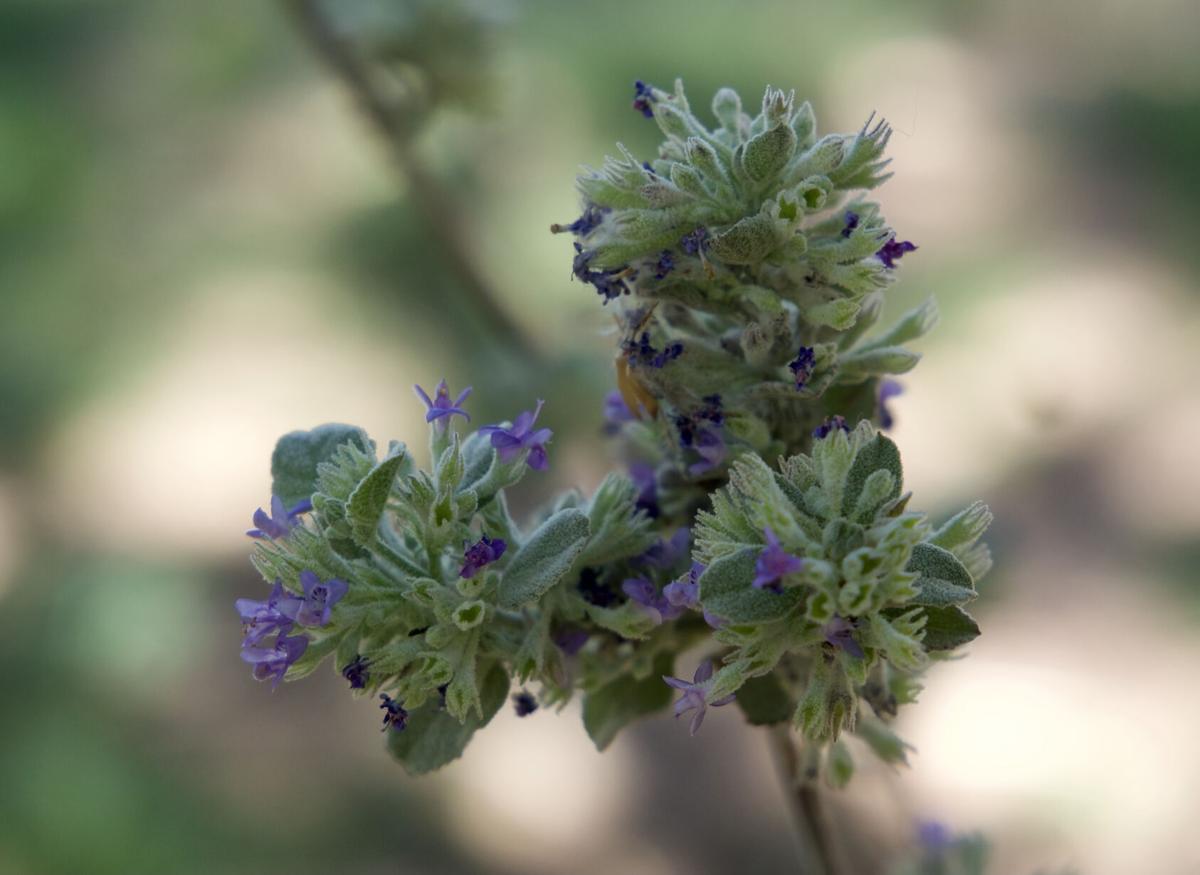Desert lavender (Hyptis or Condea emoryi) is a native shrub in the mint family which grows in canyons, on rocky slopes, and other inhospitable spots throughout southwest California, Arizona, Sonora, and Nevada. Desert lavender likes to be in well-draining soil, since its natural habitat is mainly rocky canyon slopes.
It can take full sun to part shade, and in your yard it will benefit from some additional water during the hot months, which should keep it blooming from spring through the summer.
It can grow up to 6-feet wide and around 8-feet tall, but it will probably take a while to get there. It has a moderate growth rate, but when planted in native soil will do well with minimal extra water once established. Its purple lavender-like flower stalks make it a great plant for pollinators — bees love it! Once it grows to a nice, dense size, birds will like hiding in the branches. It’s also a nice plant to have around if you like herbal scents, since its foliage will give off a fresh, lavender-like fragrance when brushed against or after rain.
If planted in shade it can get a bit leggy, so give it sun if you want it to be a dense hedge. Its leaves are a fuzzy, light silvery green, so the color palette is similar to Texas ranger, although its leaves and flower stalks are quite different in shape. Like the Texas ranger, it can be used as an informal screening hedge; just make sure you give it all the room it needs. It does not need pruning. In nature it is found in our desert below 3,000 feet, so it should survive winters below that altitude without issues; however, make sure you don’t plant it in a cold spot just in case. It’s probably hardy to around 15 F.
A good place for it might be next to a walkway, since it has no thorns; that way you can brush against it as you walk and smell the lovely scent. It will attract bees, however, so keep that in mind, as well as its large final size, as you decide where to put it.





